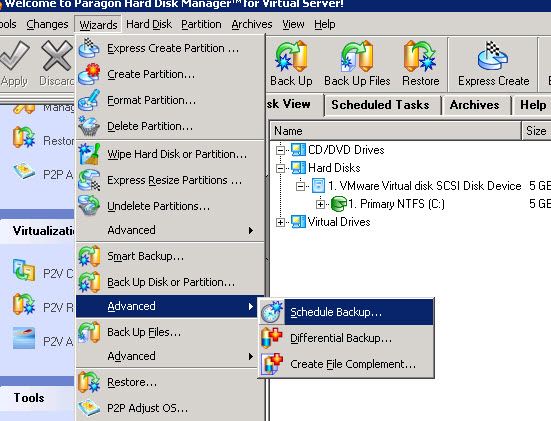

Next, manually mount the partition to the mount point. First, create a directory to serve as a mount point. The rest of this process is relatively standard. I'll expand on that idea further toward the end of the article. XFS filesystems can easily be extended but not reduced. While XFS is Red Hat's default, it may not be as flexible when combined with LVM as ext4.

You could use ext4 or RHEL's default XFS filesystem. Create a filesystemĬreate a filesystem on the new partition by using the mkfs command. The partition is /dev/sdb1.ĭisplay the capacity by using the /proc/partitions and lsblk content: # cat /proc/partitions # lsblk 3. I won't cover the syntax for fdisk in this article, but assume I created a single partition that consumes the entire 1 TB disk. It's important to note that the partitions cannot consume more than the total 1 TB of disk capacity. Use fdisk or gparted to create one or more partitions.
Hard disk manager server edition install#
Purchase a one terabyte (1 TB) hard disk drive, and then physically install it into the server. Let's very quickly review traditional storage management. The partitions are entirely contained on the individual hard disk drives. Three 1 TB hard drives with partitions and mount points. For example, if a server has three hard disk drives of 1 TB each, the sysadmin considers the storage literally, I have three 1 TB drives to work with. The result is that when a sysadmin thinks about storage, they do so based on each drive. Storage space is typically managed based on the maximum capacity of individual hard disk drives. I contrast this standard partitioning with an alternative method called Logical Volume Manager, or LVM. I use the phrase traditional storage management to describe the process of partitioning, formatting, and mounting storage capacity from a basic hard disk drive. It also demonstrates some basic commands for each approach. This article compares standard storage management and partitioning to Logical Volume Manager (LVM). However, there are many benefits to rethinking storage management on local servers. Clearly, those strategies work well and are reliable. Server storage capacity has been managed via disk drive sizes and partition configurations for decades.


 0 kommentar(er)
0 kommentar(er)
